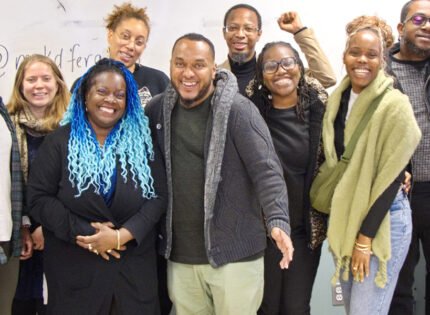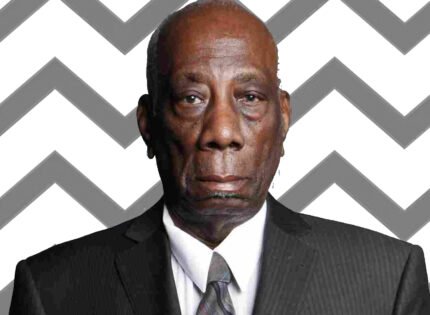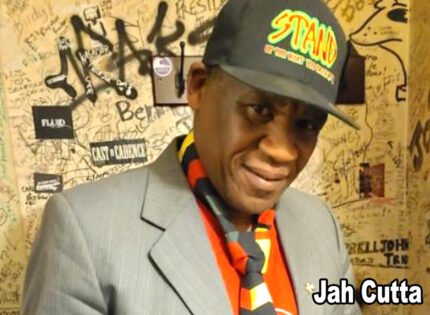Commentary
There have to be a few good people among us to take back Carifiesta and
point it in the right direction as we jump up into the future.
Egbert Gaye
For decades Carifiesta, the annual parade of music and masquerade on the streets of Montreal, has been our attempt to showcase the artistry and creativity that define the cultural heritage of the Black and Caribbean community.
For the most part, the bulk of the community could not give a flying hoot about the event and doesn’t know when it is, where it is, or even what it’s all about.
But amazingly they are still those who remain passionate about it and find the time and effort to invest in making costumes, organizing events, or participating in ‘the jump up.’
As such, every year many are drawn to the parade route on St. Catherine Street in downtown Montreal, to participate or to enjoy the sights and sounds of the still captivating event.
But for those who have eyes to see, it’s obvious that every year the thing is growing increasingly shameful for us, as it strays from what it was meant to represent for our community into a caricature of Black and Caribbean culture.
In this city where the culture of the world finds expression in the amazing diversity of communities and peoples, Montreal is home to many grand and spectacular parades and festivals. Probably that’s why it’s such an embarrassment to witness what ours has become.
There’re purists who look deep in the past and reminisce about when ours was the best in all of North America… back in the day. Sadly, those days are long gone and according to a knowledgeable voice, “they will never come back.”
Acknowledging that change is inevitable, and with time things get better or worse, the silly spectacle that is Carifiesta today should be troubling to anyone who still gives a shyte about the thing.
The once spectacular display of costumed masqueraders and other portrayals and floats fuelled by sweet soca, calypso, reggae, chutney, zouk, compas and hip hop represented the artistry and magic of Black and Caribbean culture.
Today, the rag-tag, little “dollar store” parade as it was described is dominated by roaming bands of T-Shirt-clad-pretend-marauders who have completely out-numbered, and is quickly replacing, the sprinkling of costumed masqueraders and the portrayals that spotlighted our heritage.
How did it get like this?
You see, for much of its history the parade in its various forms and under its varied names has always been fractious. Such as it was in 2008 when it was being organized out of the offices of the Cote-des-Neiges Black Community Association as an autonomous community organization, the Caribbean Cultural festivities Association.
At the time an internal squabble between two groups threatened to deteriorate into violence. One of the groups, constituting many of the youthful members of the association, came to the CONTACT for help and, engulfed by their sense of optimism and enthusiasm to take Carifiesta in another direction had our support and that of most other community groups. The decision by this newspaper and other organizations to rally behind the youth hinged on their commitment to repair relations with the organization. It never happened, and things went from bad to worse quickly. Most, if not all of those who were part of the new guards have since hightailed it out of the organization in the face of extreme backwardness of what emerged as leadership.
These days, it’s obvious that the thing is being run by people who are clueless about what Carifiesta represents as a force for political, social and racial empowerment our community.
Since it was commissioned as a parade to mark the 65th anniversary of Union United Church in 1972, Carifiesta slowly emerged into a powerful cultural with the potential to mobilize our community and showcase our artistry creativity and music. This was long before the Montreal International Jazz Festival or any other of this city’s landmark summer events were conceptualized. Carifiesta stood alone.
But over the years, infighting and petty hatred drove wedges into its core, driving good and talented managers away.
Today, the one or two individuals who take advantage of community apathy and aversion to be involved in the muck are driven by fantasies of leadership accolades, liking themselves, but clearly have no vision on how to improve the parade and make it meaningful again.
What’s more important and frightening is that they seem to be accountable to no one, blissfully seeking and collecting money (including the pittance that it is from the city) in the name of our community, and telling no one outside of their small clique how it’s spent. That practice never ends well.
How far removed are we from the days under leaders such as Winston Roberts, Patrick Robinson, Leroy Butcher, Manuel Mitchell, Victor Hayes, Henry Antoine, Michael Julien, Ron Licorish, Peter Heywood and Evelyn Houston, each of whom was involved in one way or the other was besmirched by issues of confidence and contentiousness, but nothing like the backwardness of today.
Truth is, it might be too late to salvage the thing.
Many adherents of the parade have grown old and tired. The young people who try to get involved to try to bring change are quickly driven away by the brick wall of ignorance that they confront.
And that brick wall might be all that is left of the once glorious Carifiesta caught in a jab-jab reality, young, energetic, faux-rebellious and jumping-up-and-down on a road to nowhere.
It doesn’t have to be like that because what they are showing Montrealers is not a true reflection of how to celebrate our cultural heritage. Nah.
The hope is that there is still in the community a repository of enthusiasm and determination to reclaim something in which we have invested so much of our resources to tell part of our story.
It was Martin Luther King Jr. who urged that good men, good people have to rebuild that which was broken by bad people….
So there have to be a few good people among us to take back Carifiesta and point it in the right direction as we jump up into the future.















